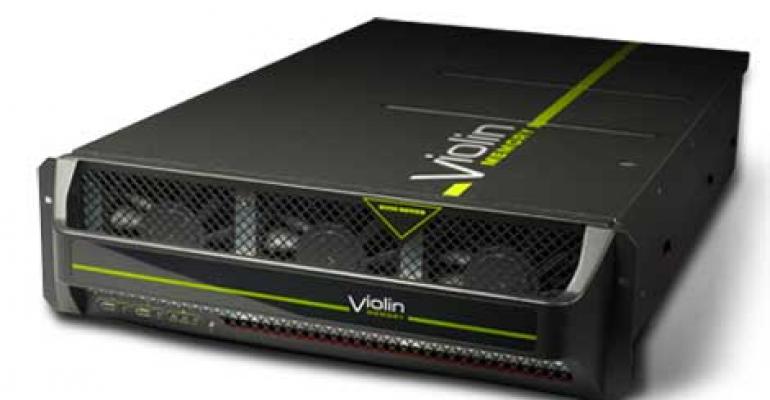With the launch of its Concerto 7000 all-flash array Violin Memory is introducing comprehensive data services software featuring synchronous and asynchronous replication and stretch metro cluster capabilities.
Data services have been around for a long time for legacy mechanical disk vendors, and the company has reproduced those data services -- which enterprises expect and rely on -- in its all-flash arrays.
The array's business continuity features empower the enterprise to use flash for business continuity across geographically dispersed data centers with remote asynchronous replication, zero RPO (Recovery Point Objective) and RTO (Recovery Time Objective), and WAN-optimized replication. Other data services include storage snapshots, thin provisioning, LUN and capacity expansion, as well as advanced data protection and storage scaling.
“Violin has led the adoption of all-flash storage systems by both enterprises and service providers," said Tim Stammers, senior analyst at 451 Group. "Now, Violin is driving flash usage to encompass a wider range of applications.”
Designed for concurrent workloads
The array can be used by a variety of workloads simultaneously while retaining high performance -- a capability of Violin’s Flash Fabric Architecture. This is fourth-generation hardware from Violin and performs at over 500 sustained IOPS at less than .5ms (microseconds) with a mixed, heavy workload, the company said.
A 70TB array can fit in just 3RU, and raw capacity scales to 280TB in a fully configured 18RU. The solution draws 500 watts per rack unit.
The economics of all-flash storage lie not just with the cost per gigabyte, but in how the entire data center benefits from smaller footprints, more efficient storage, and the staffing resources required to maintain flash. Focusing solely on cost per gigabyte should conclude that an 'all-tape' data center is the optimal solution.
Violin claims its architecture and data services will aid in avoiding over-provisioned storage, reduce the number of cores and servers required and reduce the amount of data center space, power and cooling required to support it.
“The storage market has always been plagued by an overemphasis on dollar per gigabyte," said Greg Wong, founder and principal analyst at Forward Insights. "Now it's about the cost per data center. An all-flash array is a negative cost to the CIO when a solution brings together a one-of-a-kind hardware architecture and advanced software features to sustain enterprise workload performance while reducing hardware, software licenses and power.”
Violin Memory went public last fall and lists Global 500 enterprises as customers. It has had thousands of deployments worldwide with 10s of petabytes delivered.





